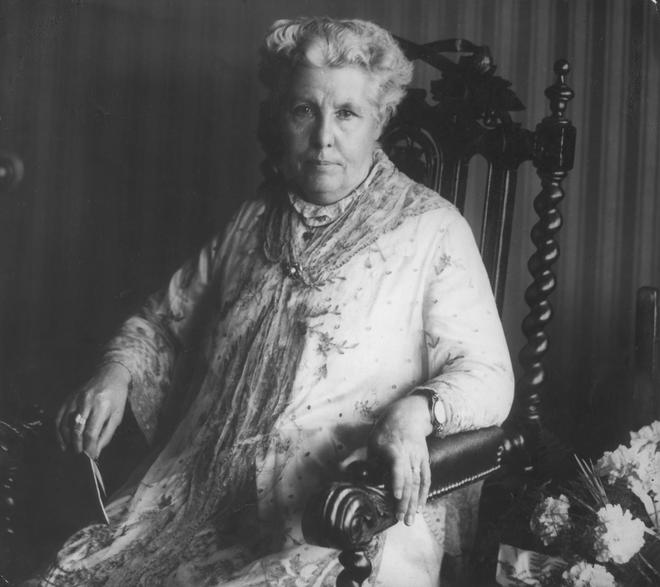
In 1879, four years after the Theosophical Society was founded in New York, its founder, Helena Petrovna Blavatsky, popularly known as Madame Blavatsky, arrived in India along with Henry Steel Olcott, one of the society’s co-founders.
Three years later, the two established the society’s headquarters on its present premises at Adyar, Madras. The popularity of the society soared quickly with many Indians, belonging to the section of educated elites, showing interest in its activities and even becoming its members.
‘Unexplained laws of nature’
Besides promoting universal brotherhood of humanity and the study of comparative religion and philosophy, especially from the eastern world, the key objective of the society was to “investigate unexplained laws of nature and powers latent in man”. The society believed that there were powers latent in human beings, which could be brought out through spiritual development.
Blavatsky was believed to have had such psychic powers, including her ability to communicate through letters on an astral plane with the ‘Mahatmas’, who inspired the founding of the society.
The society’s history, available on its website, says that while Olcott was the lecturer and organiser, the ‘phenomena’ of Blavatsky caused her to be the chief attraction. “When in Simla in the same year [1880], she gave striking demonstrations of her powers, which were reported and discussed throughout India and in other countries,” the website says.
However, it was the allegations over the dubious nature of these ‘powers’ that resulted in a major controversy in 1884 and the issue was hotly debated at least until her demise in 1891. An article published in The Hindu nearly a month after her death in London in May 1891 says, “It is the ‘phenomena’ which made the society famous throughout the civilised world; which won for the foundress her most prominent adherents; and which at last, justly or unjustly, overwhelmed society and foundress both with world-wide shame and ridicule.”
Handwritten letters
The September 1884 issue of The Madras Christian College Magazine, then edited by George Patterson, published an article containing many handwritten letters in English and French, said to have been written by Blavatsky to her assistant Emma Coulomb. The letters portrayed a picture that the ‘phenomena’ or many extraordinary events attributed to Blavatsky — including telepathy, the manifestations of the Mahatmas in their astral forms, broken saucers mysteriously becoming intact again, or raining of flowers from the ceiling — were, in fact, tricks. Importantly, the article indicated that the letters, believed to be written by the Mahatmas with revelatory insights, were, in fact, written by Blavatsky herself.
In May 1884, the United Kingdom-based Society for Psychical Research constituted a committee to investigate the alleged phenomena connected with the Theosophical Society. Richard Hodgson travelled to India later that year for the investigation and concluded that the ‘phenomena’ were tricks.
Wide coverage
The ‘exposé’, based on the Coulomb letters and Hodgson’s report, received wide attention from English newspapers across the world. On the impact of the controversy, J. Barton Scott, author of the book Slandering the Sacred: Blasphemy Law and the Shaping of Indian Secularism, in an essay published in 2009, says, “Despite Theosophists’ frequent protests to the contrary, the lure of the phenomena, in all its ambiguity, had anchored the society’s occult intervention into the discursive field of ‘world of religions’. ...If its occult spaces harboured not divine verities but rather all-too-human deceptions, this core Theosophical contract would be rendered null and void.”
Many members of the society and Blavatsky herself strongly countered the claims of the letters and Hodgson’s report. They pointed out that Coulomb and her husband Alexis Coulomb had fallen out of favour with Blavatsky and other members of the society and their ties with the society were severed in May 1884.
‘Letters forged’
Blavatsky was in London when the controversy broke out. In an interview published in the Theosophist magazine in December 1884, she said none of the letters published, except one, were written by her. She pointed to a few references in the letters, one in particular about a Maharaja of Lahore who did not exist, to argue that they were forged.
Though Patterson stressed that he was publishing the letters in public interest, many Theosophists perceived the Coulomb letters as a conspiracy by the Christian missionaries who did not like the society gaining popularity. Many dubbed Hodgson’s report biased and insincere in its approach towards bringing out the truth.
One of the prominent defenders of Blavatsky and the society was Annie Besant, who would later become the society’s president. In her interview published in The Hindu in August 1891, in what appeared to be a reproduction of the interview originally published by the London-based Pall Mall Budget magazine, Besant said none of the supernatural things attributed to Blavatsky was a marvel to her. “They are simply natural results of the development of human powers which are latent in all of us, and are based on a knowledge of laws of nature at present unknown to the majority.”
‘Merest trivialities’
Dismissing the importance given to such powers by others, she said these were the “merest trivialities” and the only indispensable tenet of the society was universal brotherhood. Blavatsky herself never offered to exhibit her powers and regretted the prominence given to them, Besant said. She added that Blavatsky knew that the Coulombs would betray her and yet helped them as she thought of it as a duty.
Although the controversy continued to be intensely discussed even in the early 19th Century, the Theosophical Society survived it, albeit with a split into two groups after the death of Blavatsky. The group headquartered at Adyar carries the original name and it held its 147th international convention in December last.







